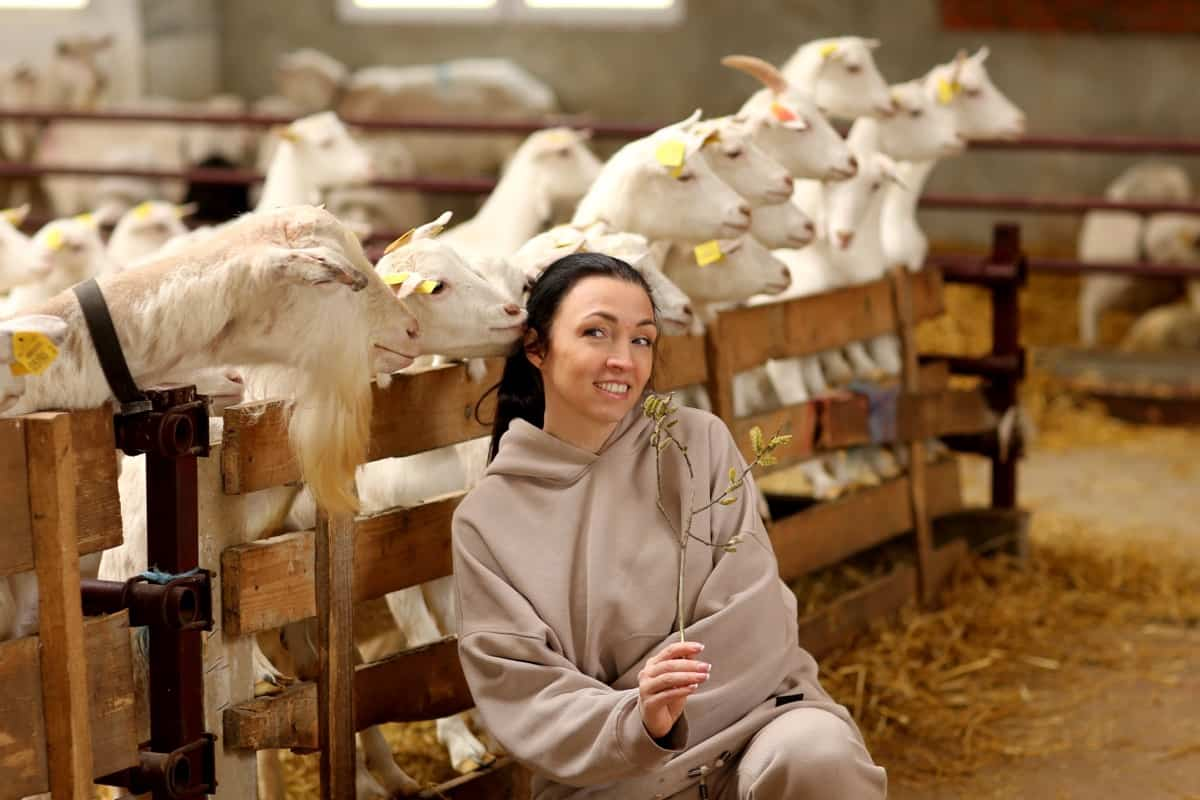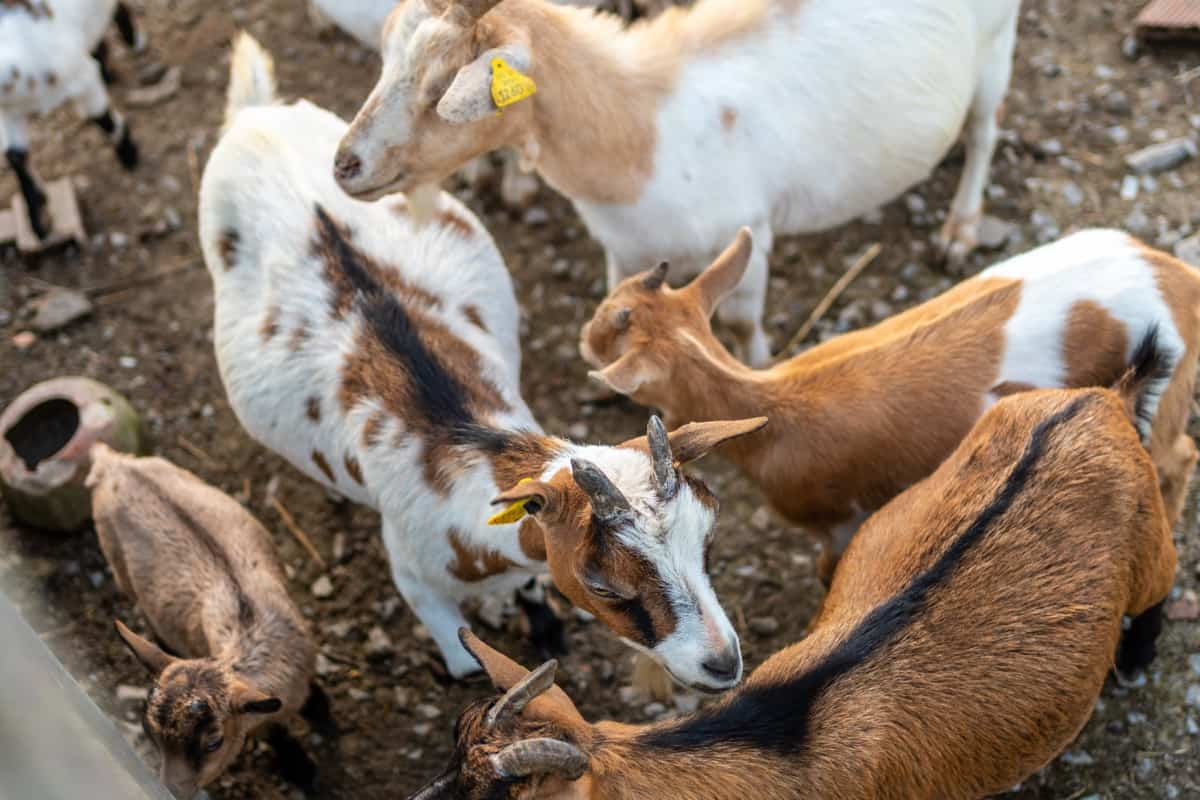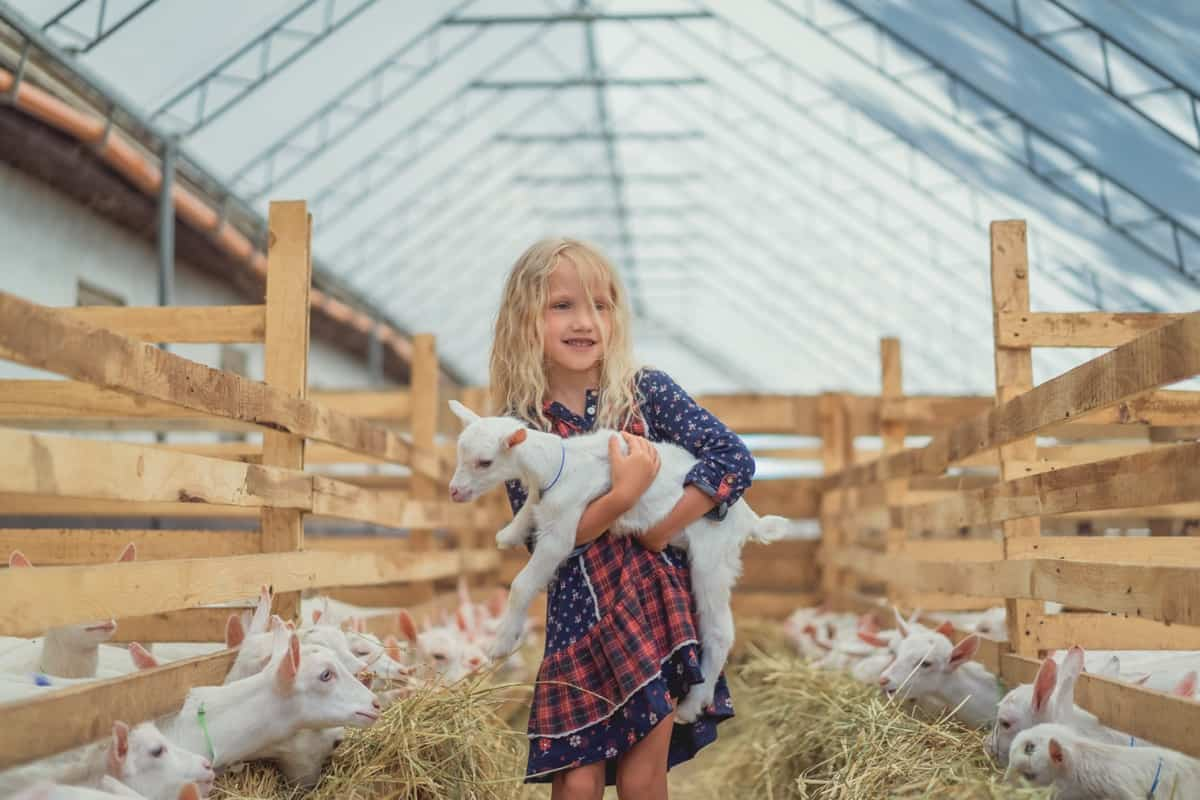Farmers can better organize their goat breeding using a goat breeding calendar. There are three phases to a goat’s gestation cycle, which lasts around 150 days: early (days 1–50), middle (days 51–100), and late (days 101–150). In the early stages, nourish well and watch for pregnancy symptoms.

Maintain appropriate diet and care during this phase, and prepare to be kidding. In the latter stages, keep pregnant goats apart from the rest of the herd, provide a hygienic place to give birth, and be on hand to help with kidding. Use a goat gestation table to keep track of these phases and guarantee safe pregnancies and deliveries.
What is a Goat Breeding Calendar?
A goat breeder’s calendar is a schedule that aids in organizing their goats’ mating or breeding activities for the best outcomes. It considers variables such as age, health, and preferred kidding (the birth of young goats) time. It usually separates the year into breeding seasons so goats can mate in particular months.
This guarantees that children are born during ideal weather and a time of plenty of resources. Goat farmers use this calendar to prevent breeding when the weather is too harsh or the goats are too young or old. It increases the likelihood of producing strong, healthy goat progeny.
Important Points Related to Goat Gestation
- Duration: Goat gestation typically lasts about 150 days, roughly five months. However, it can vary slightly depending on the breed.
- Signs of Pregnancy: Detecting pregnancy in goats can be challenging, but signs may include a decrease in appetite, weight gain, and changes in behavior like restlessness.
- Nutrition: It’s crucial to provide pregnant goats with proper nutrition during gestation. This includes good quality hay, fresh water, and sometimes supplements to meet their increased nutritional needs.
- Vaccinations and Deworming: Ensure pregnant goats are up-to-date on vaccinations and deworming to protect the mother and developing kids.
- Separation: Some farmers choose to separate pregnant goats from the herd a few weeks before kidding (giving birth) to provide a quiet, stress-free environment.
- Kidding Area: Prepare a clean and dry-looking area with straw or hay for the pregnant goat to give birth. Ensure it’s sheltered from harsh weather conditions.
- Monitoring: Keep a close eye on the pregnant goat as the due date approaches. Be ready to assist during labor, but avoid excessive intervention unless necessary.
- Aftercare: After kidding, the mother and newborn kids need special care. Ensure they can access colostrum (first milk) and a warm, safe environment.
- Rebreeding: After giving birth, give the mother goat some time to recover before considering rebreeding her for the next pregnancy.
- Record Keeping: Maintain accurate records of breeding dates and any complications during gestation or kidding for future reference.
In case you missed it: Top 12 Dairy Goat Breeds in the USA: The Best Milk Goat Breeds for Your Farm

Kidding Date Calculator
Breeders and goat farmers can use a calculator for the Kidding Date. It assists them in determining the best time for a pregnant goat, referred to as a doe, to give birth or “kidding. It operates as follows: The calculator considers the typical 150-day gestation period for goats when a doe becomes pregnant.
Farmers enter the date of the doe’s breeding or mating, and the calculator uses this data to determine the doe’s kidding due date. This forecast is essential for farmers because it helps them plan for the delivery of the youngsters or newborn goats. When the due date draws near, they can prepare a clean and safe birthing space, keep a closer eye on the doe’s health, and be available to help if needed.
Goat Gestation Period Calculator for Different Goat Breeds
- Boer Goats: Boer goats are a popular meat breed. Their gestation period typically lasts around 150 days or about five months.
- Nubian Goats: Nubians are known for their long ears and high milk production. Their gestation period is slightly longer, usually around 150 to 155 days.
- Alpine Goats: Alpines are another dairy breed. Their gestation period is around 145 to 155 days.
- Pygmy Goats: These miniature goats have a shorter gestation period, usually lasting around 145 to 150 days.
- Angora Goats: Angora goats produce mohair, and their gestation period is typically around 150 days.
- Saanen Goats: Known for their high milk yield, Saanens generally have a gestation period of 145 to 155 days.
- LaMancha Goats: LaMancha goats are known for their unique, short ears. They usually have a gestation period of around 145 to 155 days.
- Toggenburg Goats: Toggenburgs are a Swiss dairy breed whose gestation period typically lasts about 145 to 155 days.
- Kiko Goats: Kiko goats are bred for meat production. Their gestation period is approximately 150 days.
- Savanna Goats: Savannas are meat goats known for their white color and hardiness. Their gestation period usually ranges from 145 to 155 days.
- Cashmere Goats: Cashmere goats produce fine cashmere wool. Their gestation period is around 145 to 155 days.
- Spanish Goats: Spanish goats are hardy and adaptable meat goats. Their gestation period is typically about 145 to 155 days.
- Kinder Goats: Kinders are a dual-purpose breed for milk and meat. Their gestation period is around 145 to 155 days.
- Myotonic (Fainting) Goats: These unique goats have a genetic condition that causes their muscles to stiffen when startled. Their gestation period is typically around 145 to 150 days.
- Nigerian Dwarf Goats: Nigerian Dwarfs are miniature dairy goats. Their gestation period is shorter, usually around 145 to 150 days.
In case you missed it: Pros and Cons of Goat Farming: Every Beginner Should Know These

FAQs Related to the Goat Breeding Calendar
What is a Goat Breeding Calendar?
A Goat Breeding Calendar is a schedule that helps goat farmers plan the mating of their goats for optimal results. It outlines the best times to breed female goats (does) to maximize the chances of successful pregnancies.
When Should I Start Using a Goat Breeding Calendar?
It would be best to start using a Goat Breeding Calendar when you reach the right age for breeding, typically around 7-9 months old. Timing is crucial for successful breeding.
How Do I Create a Goat Breeding Calendar?
To create one, mark the breeding dates, monitor the doe’s heat cycles, and choose the appropriate buck (male goat). Consult with a veterinarian or experienced breeder for guidance.
What’s the Importance of a Goat Breeding Calendar?
It helps you plan for kidding (birth) seasons, improve genetics, and manage your herd’s health, ensuring a sustainable and profitable goat farming operation.
How do I Identify When My Does are in heat?
Observing behavioral changes like increased vocalization, tail wagging, mounting other goats, or a swollen vulva can indicate that a doe is in heat. You can also use tools like heat detectors or consult a vet for hormone testing.
What Factors Should I Consider When Choosing a Buck for Breeding?
Select a healthy, unrelated buck with desirable genetics, good temperament, and no history of diseases. Compatibility with your does and breed goals are also essential factors.
How Often Should I Breed My Does Using the Calendar?
Typically, it does come into heat every 17-21 days. Depending on your breeding goals and resources, you can breed them during each heat cycle or use synchronized breeding programs.
Can I Adjust the Breeding Schedule in My Goat Breeding Calendar?
Yes, it’s flexible. You can adjust the calendar based on your farm’s specific needs, but ensure you maintain proper intervals between breedings for the health of your does.
In case you missed it: Boer Goat Pros and Cons: Breed Origin, Characteristics, Lifespan, Price, and Size

How Does a Goat Breeding Calendar Help With Herd Management?
It assists in predicting kidding dates, optimizing labor, and ensuring a consistent supply of goats for meat or dairy production, which is essential for farm profitability.
Conclusion
A goat Breeding Calendar and Goat Gestation Table are valuable tools for goat farmers. They help track the stages of pregnancy, ensuring proper care and birthing preparations, ultimately leading to healthier goats and successful breeding programs.
- Feed Your Flock for Less: Top 10 Tips to Save on Chicken Feed
- Ultimate Guide to Ossabaw Island Hog: Breeding, Raising, Diet, and Care
- Hatching Answers: The Top 10 Reasons Your Chickens Aren’t Laying Eggs
- Eggs and Economics: Breaking Down the Cost of Raising Backyard Chickens
- Defend Your Greens: Proven Methods to Keep Iguanas Out of Your Garden
- Ultimate Guide to Cinnamon Queen Chicken: A Comprehensive Guide for Beginners
- Ultimate Guide to California Tan Chicken: Breeding, Raising, Diet, Egg-Production and Care
- Ultimate Guide to Marsh Daisy Chicken: Breeding, Raising, Diet, and Care
- 10 Types of Chicken Farming Businesses You Can Start for Profits